Andre Renier is an experienced member of the Knights of Iron Joust Team as well as an historical technician. As an historical technician, he basically tries to figure out exactly how things from the past worked and how they were made to work that way. He and the WEC Institute recreated the Maximillian Exploding Armor featured in a previous article on “The Jousting Life”. Recently, he has been working on creating a jousting lance better suited to the modern sport of jousting than the lances that are currently available.
He kindly agreed to be interviewed about developing his new jousting lance:
How long have you been involved in jousting?
Andre: Both L. Dale Walter and I were hired by Michigan Renaissance Festival in 1983 as their first knights along with a guy by the name of Ralph and older man whose name has been lost to history.
How did you become involved in jousting?
Andre: I have always had a love of history and horses. In the early '80's I went to the Michigan Renaissance Festival (MRF). I had spent the entire day watching shows. Late in the afternoon SAK Theater did their show. It was the first time I had seen audience participatory theater. I decided right there that I wanted to do that to be part of that kind of theater style. Also, they had no knights. What kind of Renaissance Fair had no knights on horses? So I applied for the next year and was hired. When MRF found out I had horses and was willing to work for $25 a day I became a knight...sort of. Dale was hired in much the same way but with his superior negotiating skills he got $35 a day. At that time we had no script, no idea how to joust, no armor and no one to turn to for guidance. Just a couple of guys with horses. MRF management handed us broomsticks painted black with gray duct tape spiraled down them and told us if we had more than 35 people in the stands we had to do a show.
What led you to decide to create your own jousting lance?
Andre: The Knights of Iron Joust Team may have the world's largest private modern lance collection. We were looking for something that was not on the market. I was challenged to build a lance that had better handling characteristics, was more durable and was easier to operate for beginning riders - a cost effective practice and training lance. I thought it would be easy. I was wrong. We have built 14 different models with 26 minor revisions. Our research and development costs have now exceeded $10,000 not including the costs to design and build the world's only purpose built lance lathes. We now have 5 machines dedicated to making lances and components.
What historical considerations were involved in the design of the lance?
Andre: We did not set out to recreate a lance from history. However we have learned much from the lances that remain in museums and from historical accounts. We faced the same problems they did. Lances need to do their job while looking good and not breaking the budget. They need to be light yet sturdy. In the past Limewood (similar to American Basswood) was used. It has good strength for its weight and is easily carved. Wood of the Poplar tree is similar. It is slightly more sturdy while being a touch lighter than Basswood. The drawback is that it is a bit harder to carve. Once we settled on a wood we had to develop the machines. Again, we took cues from historical lance lathes. Our machinery is really just high tech versions of what was used 500 years ago. In fact our lance lathes are largely based on images of lance lathes from the period.
What aspects of the design were based on its functionality for contemporary jousting?
Andre: We set out to make a modern lance for the modern joust. We wanted to make something that could be used for practice and would readily accept 1 1/4" balsa tips.
It needed to be something that could be used for years to come and was easy to operate. Also, it needed to be comfortable. We reduced the size of the tail section (the part that goes under the arm). Many riders complained that the early models we made were to thick under the arm. The Model 14 is large enough to put under the arm pit and hold while not being too large to be uncomfortable for most.
How much of the design was based solely on practicality? (i.e. cost to manufacture and ship, specific consumer interest, etc...)
Andre: The Model 14 is a completely modern lance. Its design was based on a number of criteria.
It needed to be light. Many of today's jousters are looking for a lance that is lighter in the tip and requires less upper body strength to raise, lower and keep on target.
It needed to offer the consumer a good value for their money. We wanted something that is easy to ship and easy to assemble once it arrives. We ship each lance pre-primer painted with a glue kit so that after unpacking a lance can be completely assembled and ready for final painting in less than 15 minutes. After the glue cures for a day the lance is ready for final painting.
What aspect of creating your lance was the most fun?
Getting the lance into my team mates hands and watching them play. For those who know Dale know that he is quick with a joke and equally quick to laugh at one, but rarely in our nearly 30 years have I seen him grin. After his second pass in a row with the X-13 (Model 13 proto-type) he grinned at me and said, "This is a game changer!"
What aspect of creating your lance was the most frustrating?
Andre: Weight. We had set a goal of a 5lb. lance "loaded" with a 1 1/4 inch by 36 inch balsa tip and a Historic Enterprises 1 1/4 inch Rubber Cornel. We had to get the weight out of the middle of the lance but retain its strength. 500 years ago they fluted the lances to achieve this. Fluting is expensive and did not achieve our goals. We tried quite a number of novel solutions including a carbon fiber lance tube. Carbon fiber composite lances are awesome but very expensive. We finally went back to a lance designed and built by L. Dale Walter in the 80's. It was still around in the attic of my garage. We used the midsection of that lance as the inspiration for the Model 12, Model 13, and Model 14. We were able to achieve a "loaded" weight of 4.5 lbs., one half pound lighter than our goal.
Did anything particularly amusing happen during the process of making your lance?
Andre: We initially thought that we wanted the balance point of the lance to be close to the front of the grip. With a lance balanced right at your index finger you feel no tip weight. We thought, "Why, we have created the perfect lance." On the first test run I happily had my new lance in hand. I asked my horse Riley for a nice slow canter. As I passed the quintain my lance was still vertical. I realized the error. A lance that is balanced so close to the grip requires that you consciously push the lance tip down. Riders who tested it found they didn't like it all. Most notably the lighter riders found that they had to use a fair amount of strength to rotate the tip down instead of just "dropping" the tip.
Is there anything else you would like to say about the lance?
Andre: The Model 14 Lance is a modern lance for the modern joust. It is designed to be easier to operate, to allow for easier rotation and easier target acquisition. It is also designed to be easier to disengage after tip break. It has a tail compartment that allows for weights to be added. This allows for customization of the balance point. The tail section can be easily modified for riders with "angel wing" armor or for riders who prefer a shorter tail section.
Who would you like to thank for inspiring and/or helping you to design and create your lance?
Andre: We would like to thank the Knights of Iron Joust Team for all the help throughout the process and Dale Walter for challenging me to build a vision and testing each of the successes and failures. I must also thank Sam Matyas and Kellyn Burtka for their insight, and honesty throughout the process. And Jason Monarch for cheering the innovations and assisting in determining how and why we had failures. Finally I'd like to thank Matthew Mansour for taking a chance on these new lances and putting them in his show.
When and where will your lances be available for purchase by the general public?
Andre: Our lances are now available for purchase through www.tiltandtack.com with ALL profits being donated to equestrian safety research.
He kindly agreed to be interviewed about developing his new jousting lance:
How long have you been involved in jousting?
Andre: Both L. Dale Walter and I were hired by Michigan Renaissance Festival in 1983 as their first knights along with a guy by the name of Ralph and older man whose name has been lost to history.
How did you become involved in jousting?
Andre: I have always had a love of history and horses. In the early '80's I went to the Michigan Renaissance Festival (MRF). I had spent the entire day watching shows. Late in the afternoon SAK Theater did their show. It was the first time I had seen audience participatory theater. I decided right there that I wanted to do that to be part of that kind of theater style. Also, they had no knights. What kind of Renaissance Fair had no knights on horses? So I applied for the next year and was hired. When MRF found out I had horses and was willing to work for $25 a day I became a knight...sort of. Dale was hired in much the same way but with his superior negotiating skills he got $35 a day. At that time we had no script, no idea how to joust, no armor and no one to turn to for guidance. Just a couple of guys with horses. MRF management handed us broomsticks painted black with gray duct tape spiraled down them and told us if we had more than 35 people in the stands we had to do a show.
What led you to decide to create your own jousting lance?
Andre: The Knights of Iron Joust Team may have the world's largest private modern lance collection. We were looking for something that was not on the market. I was challenged to build a lance that had better handling characteristics, was more durable and was easier to operate for beginning riders - a cost effective practice and training lance. I thought it would be easy. I was wrong. We have built 14 different models with 26 minor revisions. Our research and development costs have now exceeded $10,000 not including the costs to design and build the world's only purpose built lance lathes. We now have 5 machines dedicated to making lances and components.
What historical considerations were involved in the design of the lance?
Andre: We did not set out to recreate a lance from history. However we have learned much from the lances that remain in museums and from historical accounts. We faced the same problems they did. Lances need to do their job while looking good and not breaking the budget. They need to be light yet sturdy. In the past Limewood (similar to American Basswood) was used. It has good strength for its weight and is easily carved. Wood of the Poplar tree is similar. It is slightly more sturdy while being a touch lighter than Basswood. The drawback is that it is a bit harder to carve. Once we settled on a wood we had to develop the machines. Again, we took cues from historical lance lathes. Our machinery is really just high tech versions of what was used 500 years ago. In fact our lance lathes are largely based on images of lance lathes from the period.
What aspects of the design were based on its functionality for contemporary jousting?
Andre: We set out to make a modern lance for the modern joust. We wanted to make something that could be used for practice and would readily accept 1 1/4" balsa tips.
It needed to be something that could be used for years to come and was easy to operate. Also, it needed to be comfortable. We reduced the size of the tail section (the part that goes under the arm). Many riders complained that the early models we made were to thick under the arm. The Model 14 is large enough to put under the arm pit and hold while not being too large to be uncomfortable for most.
How much of the design was based solely on practicality? (i.e. cost to manufacture and ship, specific consumer interest, etc...)
Andre: The Model 14 is a completely modern lance. Its design was based on a number of criteria.
It needed to be light. Many of today's jousters are looking for a lance that is lighter in the tip and requires less upper body strength to raise, lower and keep on target.
It needed to offer the consumer a good value for their money. We wanted something that is easy to ship and easy to assemble once it arrives. We ship each lance pre-primer painted with a glue kit so that after unpacking a lance can be completely assembled and ready for final painting in less than 15 minutes. After the glue cures for a day the lance is ready for final painting.
What aspect of creating your lance was the most fun?
Getting the lance into my team mates hands and watching them play. For those who know Dale know that he is quick with a joke and equally quick to laugh at one, but rarely in our nearly 30 years have I seen him grin. After his second pass in a row with the X-13 (Model 13 proto-type) he grinned at me and said, "This is a game changer!"
What aspect of creating your lance was the most frustrating?
Andre: Weight. We had set a goal of a 5lb. lance "loaded" with a 1 1/4 inch by 36 inch balsa tip and a Historic Enterprises 1 1/4 inch Rubber Cornel. We had to get the weight out of the middle of the lance but retain its strength. 500 years ago they fluted the lances to achieve this. Fluting is expensive and did not achieve our goals. We tried quite a number of novel solutions including a carbon fiber lance tube. Carbon fiber composite lances are awesome but very expensive. We finally went back to a lance designed and built by L. Dale Walter in the 80's. It was still around in the attic of my garage. We used the midsection of that lance as the inspiration for the Model 12, Model 13, and Model 14. We were able to achieve a "loaded" weight of 4.5 lbs., one half pound lighter than our goal.
Did anything particularly amusing happen during the process of making your lance?
Andre: We initially thought that we wanted the balance point of the lance to be close to the front of the grip. With a lance balanced right at your index finger you feel no tip weight. We thought, "Why, we have created the perfect lance." On the first test run I happily had my new lance in hand. I asked my horse Riley for a nice slow canter. As I passed the quintain my lance was still vertical. I realized the error. A lance that is balanced so close to the grip requires that you consciously push the lance tip down. Riders who tested it found they didn't like it all. Most notably the lighter riders found that they had to use a fair amount of strength to rotate the tip down instead of just "dropping" the tip.
Is there anything else you would like to say about the lance?
Andre: The Model 14 Lance is a modern lance for the modern joust. It is designed to be easier to operate, to allow for easier rotation and easier target acquisition. It is also designed to be easier to disengage after tip break. It has a tail compartment that allows for weights to be added. This allows for customization of the balance point. The tail section can be easily modified for riders with "angel wing" armor or for riders who prefer a shorter tail section.
Who would you like to thank for inspiring and/or helping you to design and create your lance?
Andre: We would like to thank the Knights of Iron Joust Team for all the help throughout the process and Dale Walter for challenging me to build a vision and testing each of the successes and failures. I must also thank Sam Matyas and Kellyn Burtka for their insight, and honesty throughout the process. And Jason Monarch for cheering the innovations and assisting in determining how and why we had failures. Finally I'd like to thank Matthew Mansour for taking a chance on these new lances and putting them in his show.
When and where will your lances be available for purchase by the general public?
Andre: Our lances are now available for purchase through www.tiltandtack.com with ALL profits being donated to equestrian safety research.

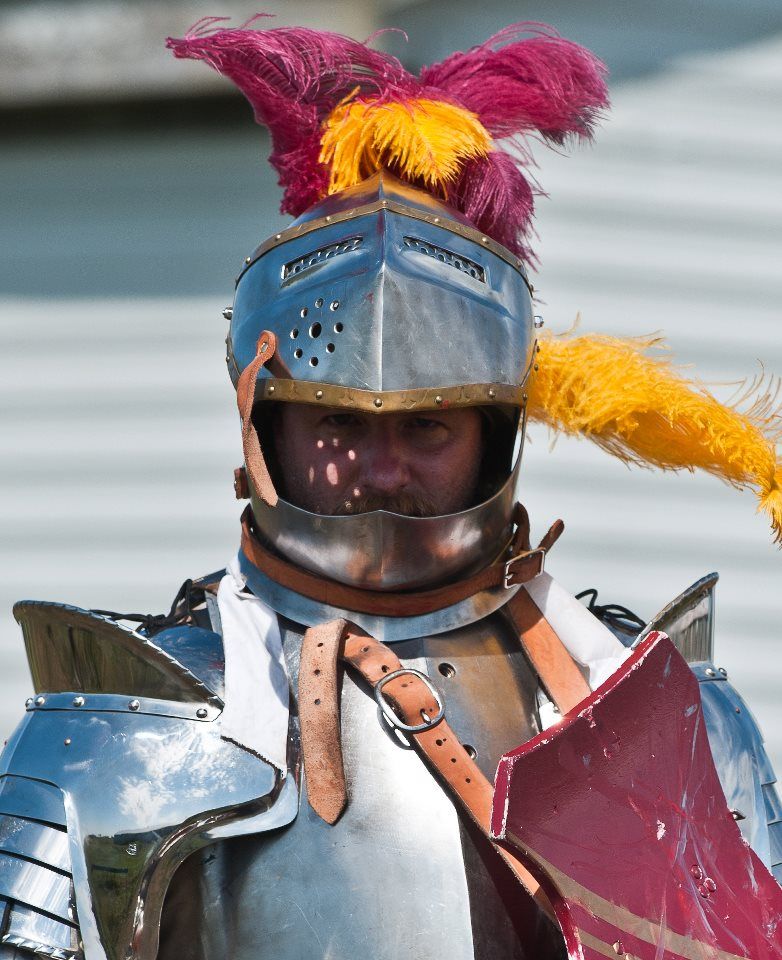
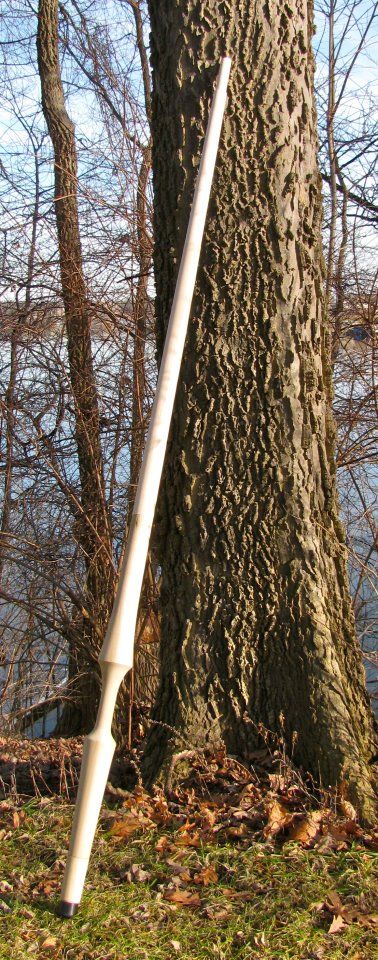



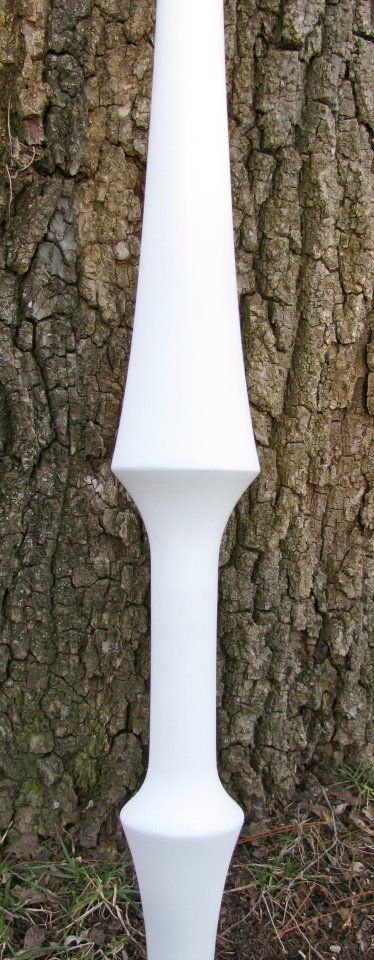



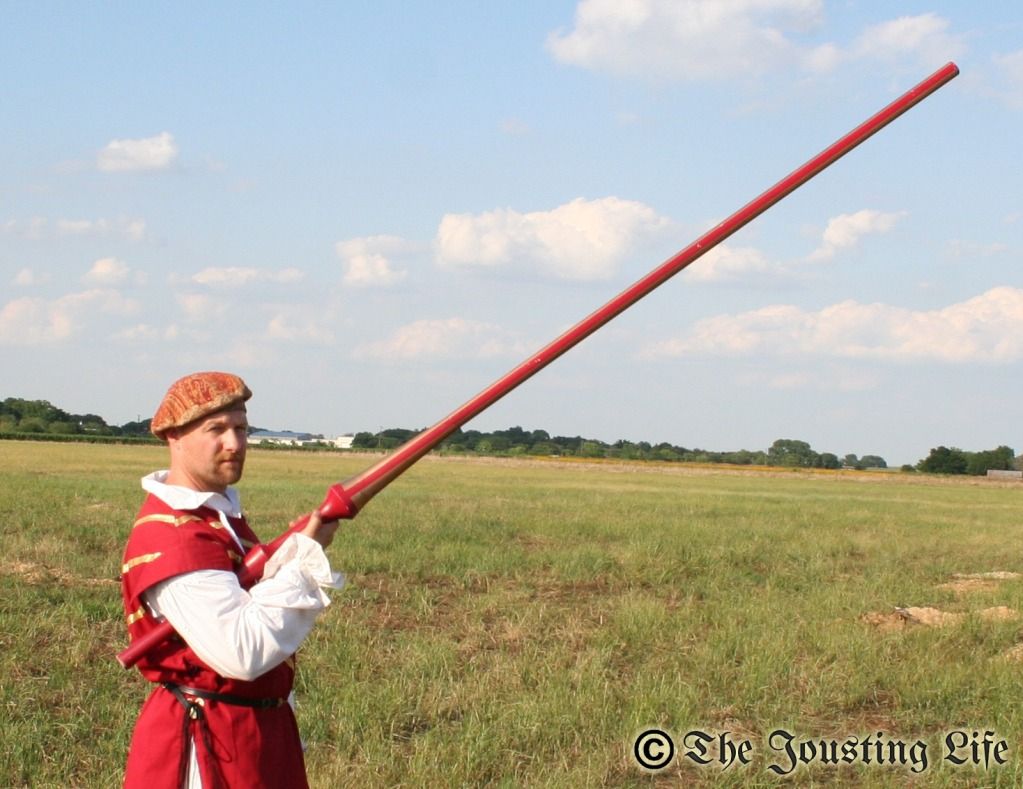
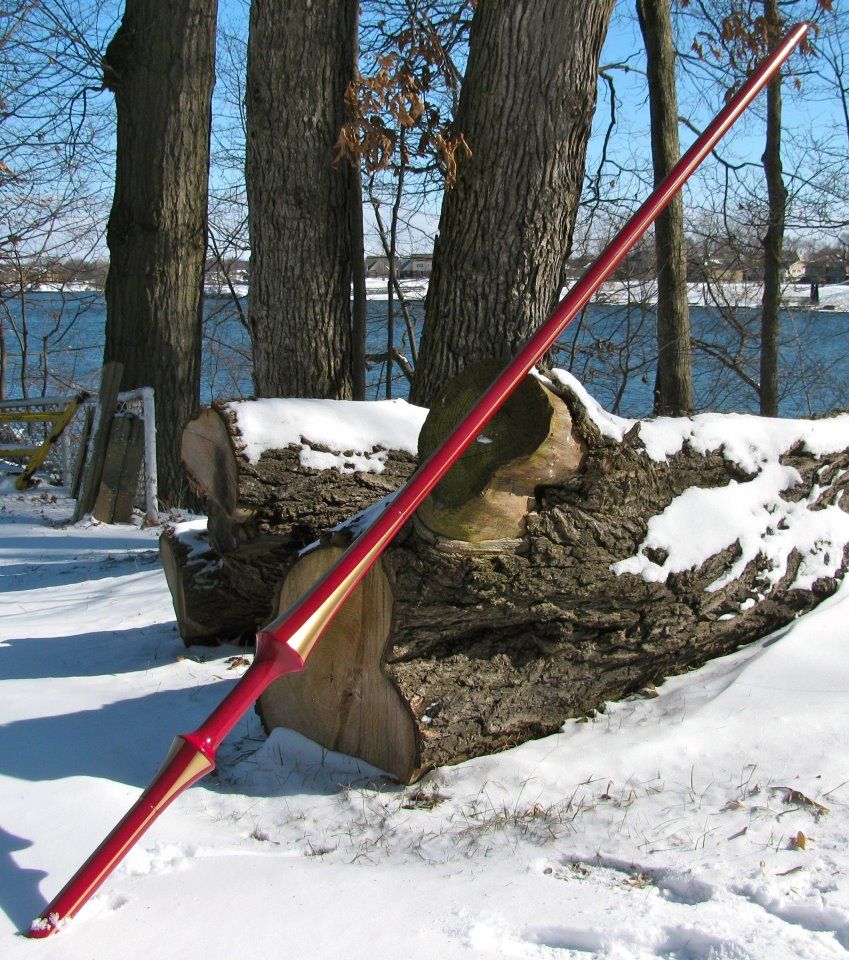
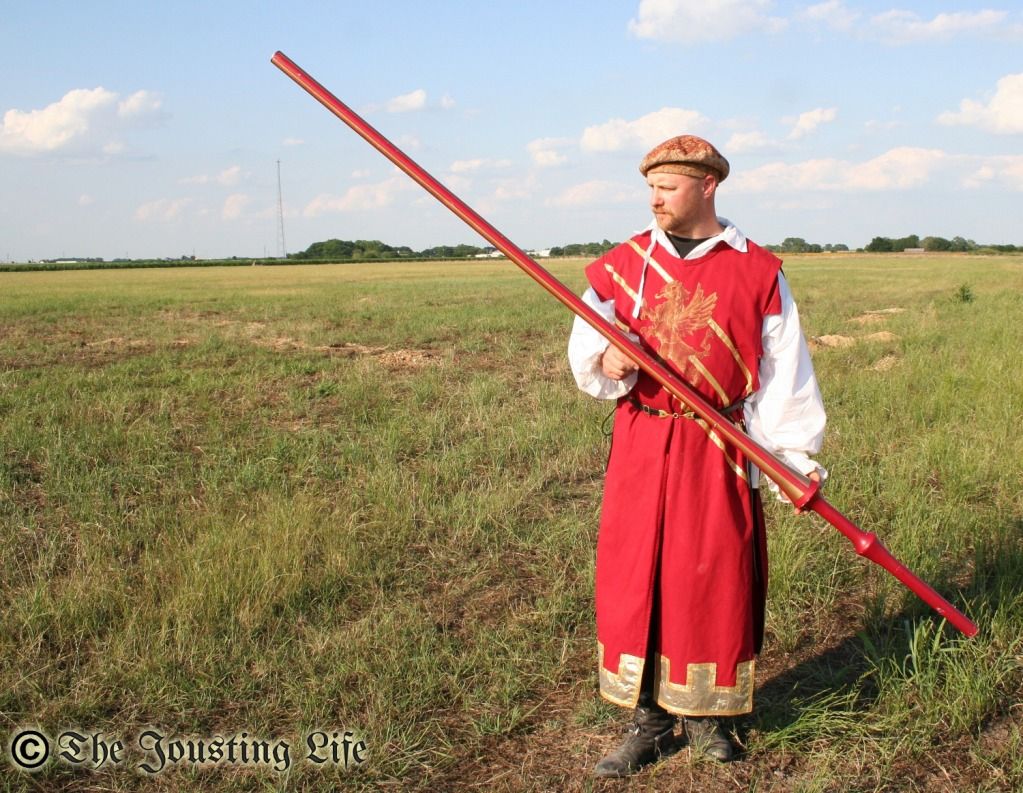
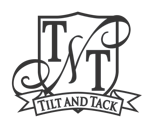
Excellent questions and wonderfully detailed answers. When we re-launch JOUSTABOUT, this lance will certainly be an option.
ReplyDelete